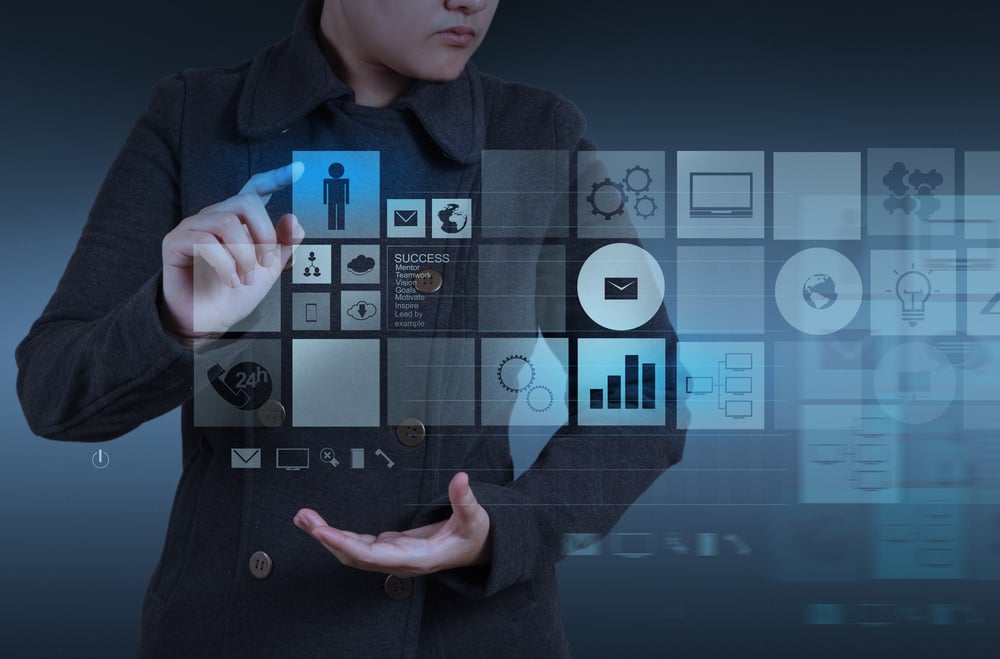Businesses heavily depend on technology in the current digital environment to optimize their efficiency and streamline operations. As IT systems become more intricate and network security gains greater importance, remote monitoring has become an indispensable asset for businesses. Remote Monitoring and Management (RMM) enables companies to proactively monitor, manage, and support their IT infrastructure, ensuring optimal performance and minimizing downtime.
In this blog, we will explore the transformative capabilities of RMM and how it revolutionizes IT management.

What is RMM?
RMM, or Remote Monitoring and Management, refers to a type of software solution or platform used by IT Managed Service Providers (MSPs) to remotely monitor, manage, and maintain client endpoints and IT systems. It allows MSPs to gain real-time visibility into their clients' devices and networks, perform proactive monitoring, deliver support, and automate various management tasks.
RMM software enables MSPs to monitor the performance, health, and status of client devices, such as servers, desktops, laptops, mobile devices, network infrastructure, and other endpoints. It collects data on system metrics, resource usage, software applications, security events, and other relevant information. This data is used to identify and respond to issues promptly, often before clients even notice them.
With RMM, MSPs can remotely access and control client devices, providing technical assistance, troubleshooting, and performing maintenance tasks without being physically present at the client's location. The software also facilitates the deployment of software updates, security patches, and configuration changes across client systems, ensuring they remain up to date and secure.
RMM Functions
RMM software encompasses a range of tools, but its primary functions revolve around two core aspects. Firstly, it empowers service companies to effectively monitor their clients' IT systems, including servers, desktops, applications, and mobile devices. This is done by providing performance data and reports that can be reviewed by service technicians.
Additionally, RMM software allows service providers remote access to perform management tasks on client systems, such as patch management, updates, and service configurations. This remote capability is particularly advantageous for service businesses. To establish a connection between RMM software and client systems, the service provider installs agent software on the servers, desktops, and mobile devices.
The agent collects data on the device's health and status and transmits it to the RMM software's portal, dashboard, or console, enabling the MSP system administrator to observe and manage the client's systems. The management console offered by RMM software vendors aims to provide a comprehensive view of the IT service company's client portfolio, consolidating details such as the number of client devices, cloud services, open help desk tickets, and alert tickets for each customer.
Typically, RMM software has the ability to automatically detect devices on client networks. Once discovered, the software can perform automatic onboarding and configuration tasks for the new devices. RMM tools commonly support Windows, Linux, and macOS devices, with varying levels of support for Android and iOS depending on the specific product.
However, it's important to note that RMM software agents generally cannot be installed in devices that lack an operating system, such as switches and routers. In such cases, RMM software vendors may offer network management capabilities that enable device management via the Simple Network Management Protocol (SNMP).
The capabilities RMM offers is invaluable to MSP providers.
RMM: Key Benefits for Your Business

Proactive Monitoring and Issue Resolution
One of the primary advantages of RMM is its proactive monitoring capabilities. Instead of waiting for an issue to arise, RMM continuously scans the network, identifies potential problems, and generates alerts. IT administrators can address these issues before they escalate into major disruptions, minimizing downtime and optimizing system performance. Whether it's monitoring resource utilization, identifying hardware failures, or tracking software vulnerabilities, RMM empowers businesses to take a preemptive approach to IT management.
Efficient Patch Management and Updates
Keeping software up to date is crucial for maintaining a secure and stable network. RMM simplifies patch management by automating the deployment of updates across multiple devices. Administrators can remotely push patches, security updates, and software upgrades to endpoints, ensuring that systems remain protected against emerging threats. By consolidating this process, RMM significantly minimizes the time and effort needed to keep the network secure and up to date.
Enhanced Security and Compliance
Security breaches and data breaches are constant threats to businesses today. RMM plays a vital role in fortifying network security by providing real-time visibility into security events and vulnerabilities. It enables administrators to monitor firewall settings, manage antivirus software, and enforce security policies across the network. Additionally, RMM can generate reports and audits to support compliance efforts, helping organizations meet industry regulations and safeguard sensitive data.
Remote Support and Troubleshooting
RMM enables IT administrators to provide efficient remote support to end users. Through secure remote access, administrators can diagnose and troubleshoot issues without the need for physical presence, reducing response times and minimizing disruptions. Whether its resolving software conflicts, assisting with configuration, or addressing user queries, RMM empowers businesses to deliver prompt and effective technical support.
Scalability and Centralized Management
As businesses expand and their IT infrastructure grows, managing diverse systems across multiple locations becomes increasingly challenging. RMM offers scalability and centralized management, allowing administrators to monitor and control geographically dispersed networks from a single console. This centralized approach simplifies the management of IT assets, ensures consistent configurations and policies, and improves overall efficiency.

Top RMM Software Vendors/Tools
Based on user satisfaction, check out this list of the top 20 Remote Monitoring and Management (RMM) Software products.
NinjaOne RMM
NinjaOne is a comprehensive Unified IT Management platform that streamlines the workflow and device management processes for IT teams. This platform integrates device management, software management, patch management, task automation, remote access, backup, ticketing, and documentation into a single, easy-to-use interface.
With over 10,000 IT teams and MSPs worldwide utilizing NinjaOne to manage their IT infrastructure, the platform has consistently earned the top spot for its exceptional customer support. Moreover, it has been recognized as the highest-rated software in its category on G2 and Gartner Digital Markets for the last three consecutive years.
Datto RMM
Datto RMM is a cloud-based platform designed for IT Managed Service Providers (MSPs) to effectively monitor, manage, and offer assistance to endpoints across their client base. This secure platform provides a comprehensive range of features, including a multi-tenant view, automated monitoring, alerts, patch management, endpoint remote control, and insightful reporting.
With a strong emphasis on security, Datto RMM ensures robust protection for endpoints and data through features like native ransomware detection, mandatory 2FA, agent encryption, and more. With 24x7 support and an uptime of 99.99%, MSPs can confidently rely on Datto RMM to deliver an exceptional customer experience.
Conclusion
In an era where technology plays a pivotal role in business operations, remote monitoring and management (RMM) has emerged as a vital solution for organizations of all sizes. RMM empowers business to proactively monitor, manage, and support their IT infrastructure, resulting in improved efficiency, enhanced security, and reduced downtime.
By leveraging RMM tools, businesses can streamline their operations, maximize productivity, and stay ahead in today's competitive market. As technology continues to evolve, embracing RMM becomes imperative for organizations seeking to thrive in the digital landscape.
Datalink Can Help
Datalink Networks will proactively monitor your network remotely and report potential points of failure before they become critical. We offer a guaranteed one-hour SLA with a 95% issue remediation and complete reporting of open issues, issues resolved, and critical open tickets.
Our 24x7x365 Network Operations Center (NOC) staff provides monitoring, remote remediation, and patch management work for services, workstations, and network devices.




